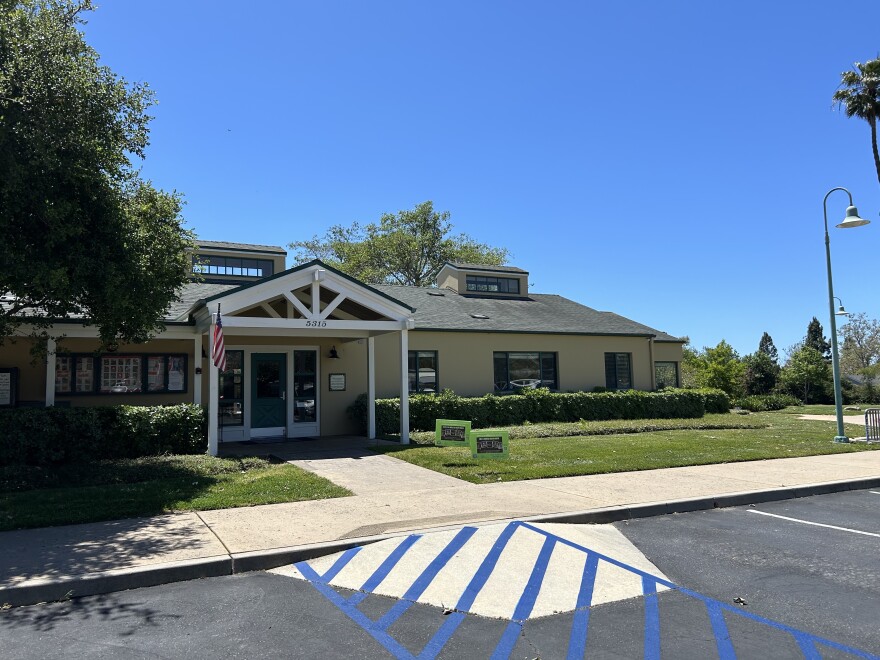On weekdays, Girls Inc. in Carpinteria is a girls’ leadership program and a place for after-school care — and now, it’s a climate resilience hub for the neighborhood, too. The non-profit is prepared to serve as a community gathering space during climate events like extreme heat.
Carpinteria is located on the south coast of Santa Barbara county. The local economy thrives on agriculture, tech, and tourism. Anyone traveling between Los Angeles and San Francisco passes through on the 101 with a view of the ocean on one side, and farms and mountains on the other.
At the Girls Inc. campus on Foothill Road, there are solar panels on the roof, shade trees near the playground, and air-conditioned classrooms.
It’s one of three pilot locations selected by the County of Santa Barbara to become a place for locals to gather during climate-related events. Jamie Collins, Executive Director at Girls Inc., said it’s a natural fit.
“Carpinteria doesn’t have a community center. We become geographically isolated when major storms hit, the freeway shut down, we don’t have a hospital, there’s all of these things that we don’t have access to,” she said.
On a tour of the site, Collins points out how the location can serve the community in an extreme heat event. She said there’s a mix of air conditioning, fans, and shade.
“I think on campus we could probably have between 300 and 500 people,” she said.
They also have a large kitchen with a food pantry, and a side alleyway, for deliveries if needed.
“Easy access if we needed to bring in additional cooling options. And then the generator would connect right into our giant panel, right here in the alley,” Collins said.
The backup generator — coming soon — is an important feature, since extreme heat days often come with fire danger and wind that can lead to grid outages. Between the solar panels and backup generator, the hub will still have air conditioning and lights if Carpinteria’s electricity goes down.
Collins said the program matches their community-minded goals as an organization. She said that, besides their after-school programs, Girls Inc. also runs a summer camp, so she regularly sees parents and family members coming and going all year around.
“We have parents here on a daily basis. We host monthly family engagement nights also, to provide families with information and resources around how to respond to extreme weather, including heat,” she said.
The neighborhood hub will activate during extreme heat events. On-site staff is trained in CPR and First Aid, and Collins said the location will be open for anyone who needs support.

Garrett Wong is the climate program manager for the County of Santa Barbara. He works closely with the agencies and non-profits managing the hub program. He said extreme heat days — when temperatures are unusually high — are projected to increase in frequency on the Central Coast, and it’s one of the county’s climate concerns.
“Extreme heat affects people who are not used to heat, so in a mild climate it doesn’t take a lot of high temperature to actually stress a body out,” he said.
Wong said the county received a grant from the State of California to pilot a few neighborhood hubs. Then local organizations applied to the program, and three were selected.
“One was in New Cuyama which is in the northern part of our county. One was in the eastside of Santa Barbara and then one was in Carpinteria,” Wong said.
He said each location has its own unique needs, but they all serve populations that have fewer resources and are vulnerable during times of extreme weather events.
“They all serve communities that we would consider to be among the vulnerable populations, either due to the fact that they may not speak English as their primary language, or they may be of lower income status, or they may be living in more rural, remote locations or they might be living in renter situations,” he said.
The three sites were already well-connected in their communities, he said, so the grant helped to retrofit existing locations, build capacity, and train personnel for emergency operations.
Wong said the county continues to apply for grants from the state to help build climate resilience through projects like this, but it’s a competitive process.
“So, I think that tells us two good things — one is that the state is still willing to put funding towards this, and this is only the beginning, really — and two, there is a massive appetite for doing this work. People are willing to come together and come up with creative solutions,” he said.
Ideally, Wong said, neighborhood hubs will exist up and down the Central Coast in the coming years.
As we wrap up our series “The Heat Beat,” remember that most heat-related illnesses and deaths can be prevented. Finding solutions as a community, like cooling centers, worker protections, and home upgrades, will make extreme heat days safer for all residents on the Central Coast.
This series was made possible by a grant from the USC Annenberg Center for Health Journalism.







